Selecting Staking Hardware
There are no official specifications for running a Rocket Pool node. This page offers some guidelines and examples that you can use to select staking hardware.
The minimum hardware requirements of your node will depend on the Consensus and Execution clients that you choose.
If, for example, you intend to run your node on a low powered device, you may be limited to using Geth as your Execution client and Nimbus as your Consensus client.
If you're using a more powerful NUC with 32+ GB of RAM, all client combinations are open to you.
The guidelines below assume you want a comfortable level of hardware, meaning you have excess capacity.
If you keep these guidelines in mind, your node will have plenty of resources to run any of the Rocket Pool supported client combinations.
This will allow you to choose a random client pair, which is very important for client diversity on the Ethereum network.
Ethereum staking is very forgiving. If your house is flooded and your staking device is fried, there is no big penalty for taking a week to get back up and running (unless you happen to be in a sync committee, which is a very rare event). Component failure might happen at some point, but don't stress about it. Downtime does not get you slashed unless you are offline during a major outage of the entire Ethereum network.
Hardware Requirements
Ethereum validators are not very computationally expensive, which is to say that once your Execution and Consensus clients are running, any additional validator will use a very small amount of additional resources. This grows up to 64 validators, at which point the resources required for adding a 65th validator and beyond are negligible.
In our experience, most setups, including mini-PCs and NUCs, are capable of running an effectively unlimited number of validators.
CPU Requirements
Guideline: any modern CPU with at least 4 threads.
Running a Rocket Pool node is not very computationally intensive. The biggest impact of the CPU is how fast your node can initially sync the state of the blockchain when you first create it (or if you ever change clients later). After the initial sync, the CPU is not used as heavily.
CPU naming can be deceptive; an Intel Core i5 from 2010 is usually less powerful than a core i3 from 2022. Many community members use Intel NUC devices because of their small form factor, but an old i5 NUC may be a worse choice than a new i3. For this reason, we recommend using a "modern" CPU that is, at most, a few years old. More specifically, for x64-based CPUs, we recommend a CPU that supports the BMI2 extension - check the manufacturer's specs for your CPU to see if it is supported. Not all modern CPUs support this; for example, Celeron CPUs tend not to include it.
ARM-based CPUs (such as the Mac M1 or M2, or the Rock 5B) do not apply to the BMI2 extension above.
If you are interested in using a NUC, you can tell how modern the NUC is by its model number.
They are formatted as NUC + generation number + model + CPU type + suffix.
For example, a NUC11PAHi50Z unit is a 11th generation i5 unit.
You can see a list of NUCs here on the Intel website.
Other mini-PCs, such as the Asus PN50 or PN51, do not follow this convention but information about which CPU is used by them should be included in their product pages.
The amount of cores on a CPU is less relevant than its number of threads. We recommend a minimum of 4 threads for Rocket Pool node operation. A 2 core CPU with 4 threads will work without issue. It is rare to find a CPU with only 2 threads.
RAM Requirements
Guideline: at least 16 GB of RAM, 32 GB preferred, DDR4 preferred
Rocket Pool nodes can operate with as little as 16 GB of RAM. We generally recommend having slightly more to offer some headroom and full support for RAM-heavy clients such as Teku. An added benefit of more RAM is that you can provide a larger cache size to Execution client, which tends to slow the rate of your disk space usage.
SSD Requirements
Guideline: a 2+ TB SSD that has TLC or better, with a DRAM cache. NVMe preferred.
This element is more important than most people expect. The Execution client relies heavily on IOPS, or "operations per second"; we recommend 15k Read IOPS, and 5k Write IOPS In practice, this means that:
- HDD (spinning platter) drives will not work
- SATA or external USB 3.0+ SSDs can work
- NVMe SSD drives are preferred
If you already have an SSD you want to use and want to be sure it has sufficient performance for node operation.
* If you are unsure if your disk meets these performance requirements, fio is a good way to test them.
See here for Linux instructions,
and here for MacOS instructions.
SSD selection can be a complex choice!
The method SSDs use to store data on their flash chips has a noticeable impact on speed and longevity.
When shopping for an SSD you might notice labels like QLC, TLC or SLC.
These stand for the amount of data contained within a single cell of the flash chip: Q for "quad" means 4, T for "triple" means 3, M for "multi" means 2, and S for "single" means 1.
We recommend TLC, MLC, or SLC drives. We do not recommend QLC drives due to their slower performance and lower total reliability.
SSDs come with or without DRAM, which is a hardware element that makes accessing data on the SSD more efficient. Those with DRAM are faster but those without DRAM are cheaper. However, DRAM is quite important for providing smooth node operation.
We recommend a drive with a DRAM cache. We do not recommend DRAM-less drives.
The final consideration is drive size.
As of 10/2024, the geth execution client database size requires about 1.2TB of space after it finishes its initial sync (or after you just finished pruning it).
This will grow steadily over time, and while pruning can regain some of that space, the freshly pruned state does grow over time.
You will have peace of mind with a larger drive.
Common Accessories
Many node operators improve their setups beyond the minimum requirements. Some common additions include:
- SSD heatsinks to extend the drive lifespan
- Uninterruptable power supplies (UPS) in case of power outages
- A fallback node to have a backup in case something fails
These are all convenient to have, but not required to run a Rocket Pool node.
Example Setups
In this section, we'll showcase a few of the varied builds that Rocket Pool's community has created for themselves. They are examples of what people are using, not recommendations for how you should run your setup. Note that many are somewhat outdated and, eg, use SSDs that are now too small.
Xer0's Server

Discord user Xer0 is among the many stakers that opted to go with a conventional PC form factor for their staking machine. They wanted to build a rig that would last for years and years to come with minimal maintenance and upgrading required, while still offering complete customization of every component. To that end, Xer0 devised and built a full ATX server - much like a traditional desktop PC, but targeted exclusively at staking on Ethereum. Their setup includes a six-core Xeon Bronze 3204 (1.9 GHz), 8 DDR4 slots, and an M.2 slot... though since this is essentially a home server build, the exact components are completely up to the end user.
Xer0's setup:
- Motherboard: Supermicro X11SPI-TF ($440)
- CPU: Xeon Bronze 3204 ($248)
- RAM: NEMIX 2x32GB DDR4 ECC 2933MHz ($359)
- SSD: Sabrent 2TB Rocket M.2 2280 SSD ($250)
- Case: SilverStone HTPC ATX GD07B ($172)
- PSU: EVGA SuperNova 650 G3, 80+ Gold ($111)
- Cooler: Noctua NH-D9 DX-3647 4U ($100)
- Total: $1680
Here are Xer0's comments on why they chose this setup:
Obviously there is no need to build a monstrosity for simply staking on the Ethereum network, but I do have a few reasons why I built something like this.
- Now I believe that 1 or more validators in the future will be worth much more than what we are seeing right now, so I wanted to buy something that will be able to support the network for at least the next 10-20 years without a hiccup.
- By creating a machine that has at this many cores I've also given myself a lot more headroom to the point of I could run an L2 aggregator on top of this without any problems (regarding hardware) and anything else that I'd want to run on a server. :)
- I like building computers, and so I built it…
- With a server build, It gives me a lot more flexibility with hardware and features that most computers don't have natively.
- A bit of future proof (just in-case) :wink:
Darcius's Shelf Rig
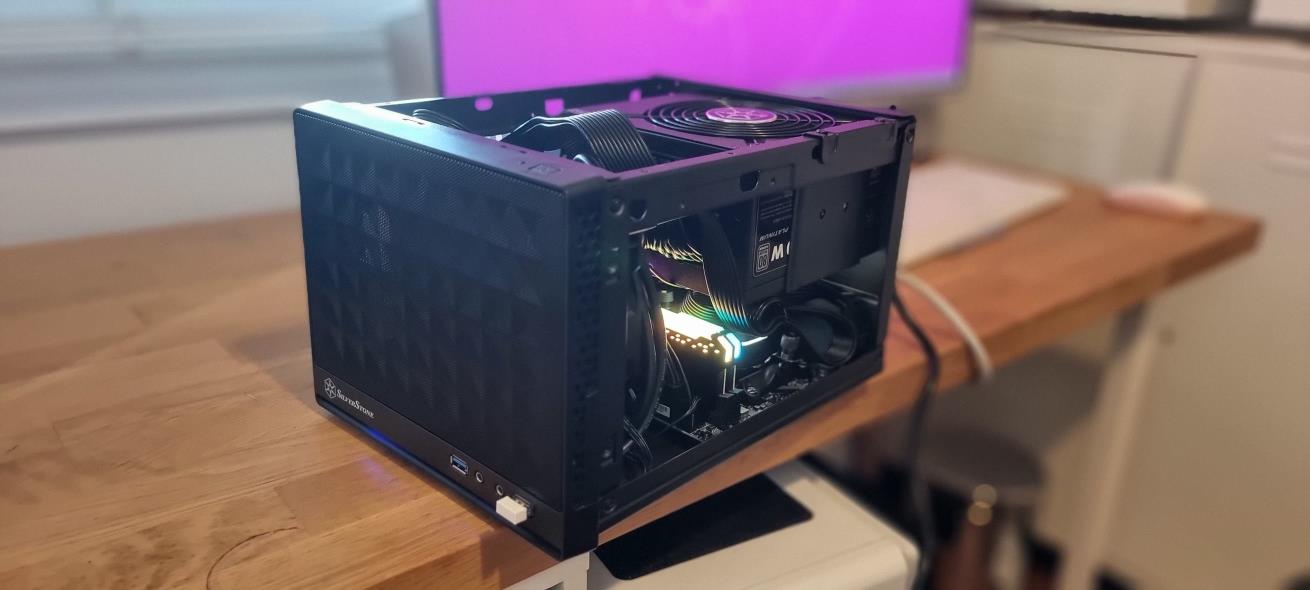
Rocket Pool's founder David Rugendyke (known on Discord as darcius) spent a long time perfecting his node. After some debate, he built a Mini-ITX that's small and portable, but still packs an enormous amount of processing power. His rig includes an 8-core Ryzen 7 5800x (3.8 GHz), two DDR4 slots, and two M.2 slots for NVMe SSDs. It is truly one of the most high-performance rigs of the Rocket Pool nodes, but with good reason: darcius runs a special type of Rocket Pool node called an Oracle Node, which relays information from the Beacon chain back to the Execution chain about all of the Rocket Pool validators. With thousands of Rocket Pool minipools active to watch, that job takes a lot of horsepower... but his shelf rig is easily up to the task.
Darcius's setup:
- Motherboard: MSI MPG B550I Mini-ITX AMD ($200)
- CPU: AMD Ryzen 7 5800x ($490)
- RAM: Corsair Vengeance RGB Pro 2x16GB DDR4 3600MHz ($390)
- SSD: Samsung 970 EVO Plus 2TB M.2 2280 NVMe SSD ($315)
- Case: SilverStone SST-SG13B Mini-ITX ($52)
- PSU: SilverStone Strider Platinum 550W ($140)
- Total: $1587
Yorick's microATX Build
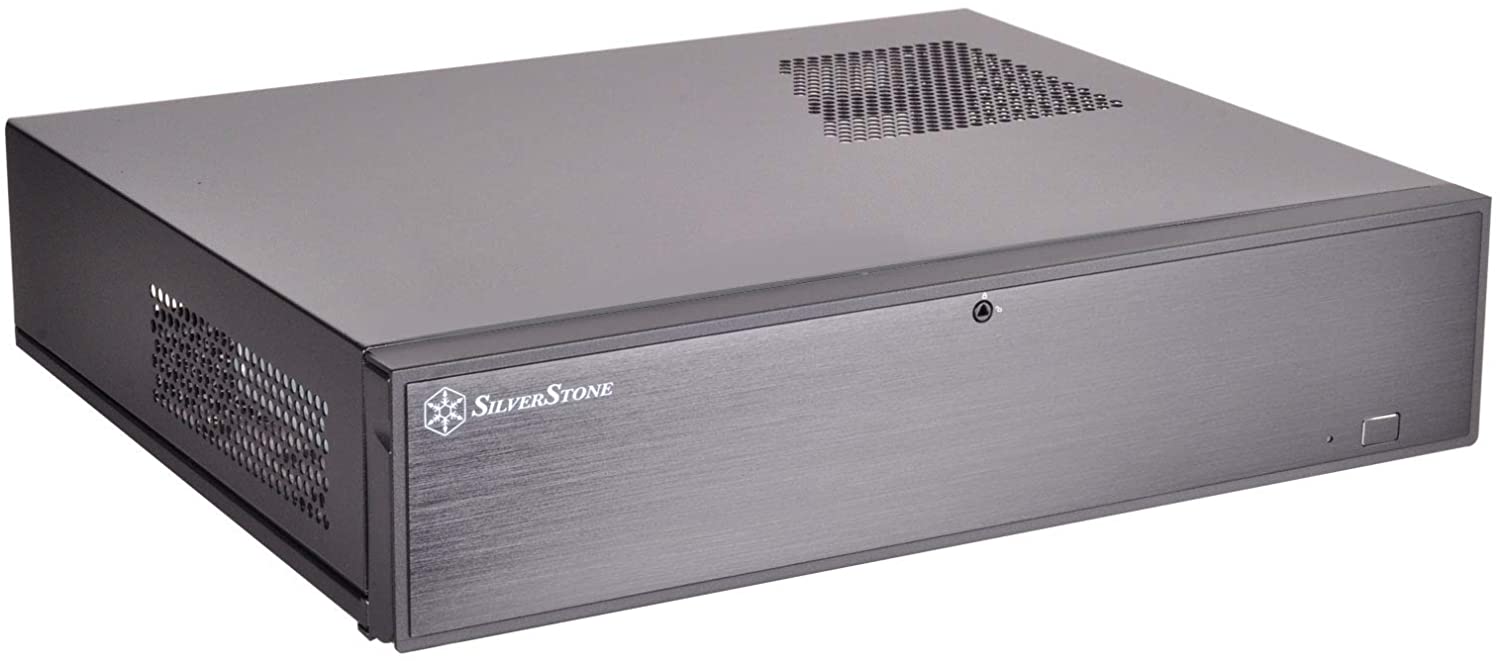
Veteran hardware enthusiast YorickDowne has a lot of experience building and maintaining servers. Using that knowledge, he has settled on a flexible microATX setup. His machine is considerably smaller than a typical PC, but still manages to fit in server-grade technology that maximizes resilience and uptime - key metrics when running a Rocket Pool node. He has recommendations for both Intel and AMD setups, which you can find on his website. The Intel version uses a quad core i3-9100F (3.6 GHz) or a Xeon CPU, and the AMD version suggests any Ryzen CPU that supports ECC memory. For both configurations, he suggests 16 GB of ECC RAM, and a 1 TB NVMe SSD.
Yorick's Setup:
- Motherboard: SuperMicro X11SCL-F-O ($200)
- CPU: Intel i3-9100F ($150)
- RAM: Samsung 1x16GB DDR4 ECC UDIMM 2400MHz ($100)
- SSD: Samsung 970 EVO Plus 1TB M.2 2280 NVMe SSD ($165)
- Case: SilverStone Micro ATX HTPC Case ML04B-USA ($110)
- PSU: Any (example: Seasonic PRIME Fanless PX-500 Platinum 500W) ($161)
- Case fans: Any
- Total: About $886
Here are Yorick's comments on why he chose this setup:
- It is at the same or lower cost as some NUCs
- It has ECC RAM, which means that if memory fails - which it does now and then - I will know, because the system will tell me. I do not have to run memtest87 for 4-5 days to figure out whether my problem with instability is even memory-related. I protect my time fiercely so I can spend it bloviating on Discord instead of troubleshooting hardware
- It has IPMI, which is remote management via Ethernet/browser of the entire machine, including UEFI and power-cycle. I should be allowed to go on an extended vacation and still have full remote access.
- If I want redundant storage so eventual SSD failure is a non-event, I can do that
- It allows for great flexibility in build choices. I can choose however much RAM and compute I want; I can choose to run a NAS with virtualization tech like TrueNAS Scale and run the node on there alongside some other home-servery stuff.
Drez's Laptop
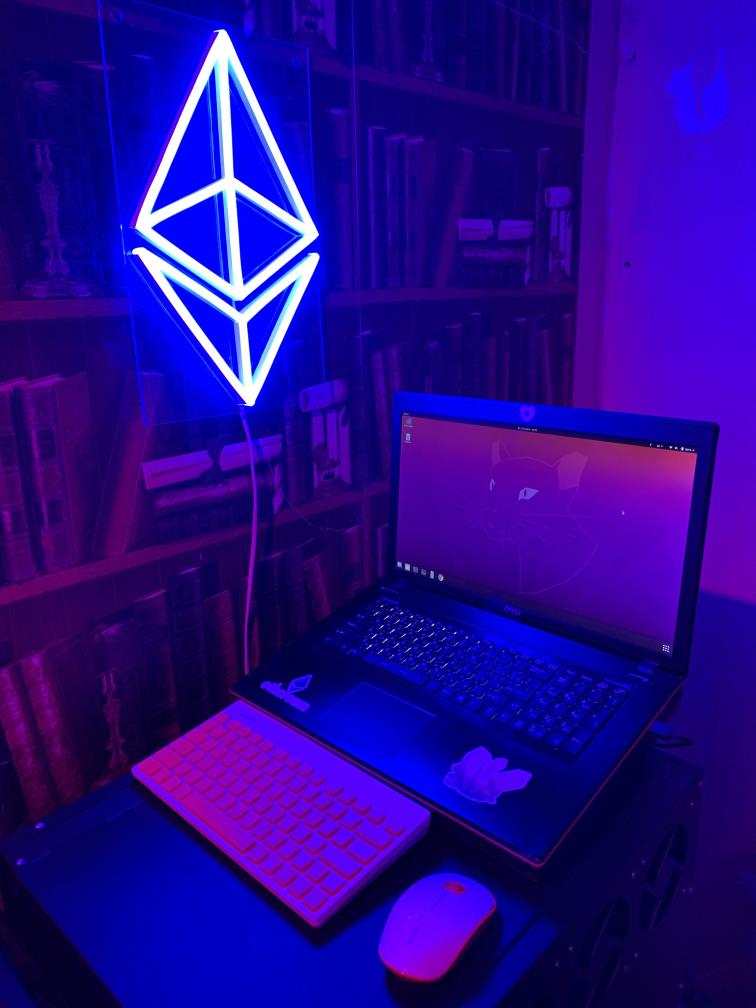
Sometimes, shelling out for new hardware just doesn't make sense. In Discord user Drez's case, running a Rocket Pool node is one of those times. Drez happened to have a spare laptop lying around, and they turned it into a node with ease. Their machine comes with a quad core i7-4710HQ (2.5 GHz), two DDR3 slots, and a 2.5" SATA slot. Being a laptop, it also comes with its own battery (which offsets the need for a UPS). They added some additional upgrades over time, giving the laptop even more power for extra peace of mind.
Drez's setup:
- Laptop: MSI GE70 2PE Apache Pro ($1800)
- RAM: 2x8GB DDR3 1333Mhz (Included)
- SSD: Samsung 860 EVO 1TB 2.5" SATA ($110)
- Total: $1910
Here are Drez's comments on why they chose this setup:
Main reason i am gonna stake on this laptop is because i already had spare one and dont need to spend extra money on a new server. I like its mobility, compactness, built-in screen for easy monitoring. In case of overheating i bought a laptop cooling pad and spare CPU cooler just in case, i also recommend to change thermal compound paste especially if you're gonna run on an older machine
NUCs (Next Unit of Computing) and Mini-PCs
Running a Rocket Pool node doesn't necessarily require a complete build-it-yourself desktop. In fact, one of the most popular setups among stakers is the illustrious NUC. A NUC (Next Unit of Computing) is essentially a small, self-contained computer that is designed around very low power usage and maximum efficiency. NUCs are great for most stakers that only run a few validators because of their low maintenance, low monthly running costs, and ease of setup. Unlike PCs, NUCs come preassembled in a case; all you need to do is add some RAM, add an SSD, and you're up and running! Below are a few examples of NUC setups that some Rocket Pool veterans use and recommend.
Ethernet Adaptor Compatibility
If you're planning to buy an Intel® NUC 11th or 12th Generation you can encounter connectivity issues with the ethernet adaptor, specifically if the adaptor is identified as I225-LM (Check intel especifications before buying). If you already have one, there are steps you can take to address this concern. The I225-LM adaptor has been associated with certain compatibility challenges that may lead to system freezes and unexpected kernel behavior, particularly when using Linux kernels.
To determine if your NUC employs the problematic I225-LM ethernet adaptor, you can use the following command in the terminal:
If the output confirms the presence of the I225-LM adaptor, you might experience the mentioned issues. However, there are remedies you can apply to mitigate these problems:
USB-C to Ethernet Adaptor: A viable solution involves acquiring a USB-C to Ethernet adaptor and connecting your internet cable through this external adaptor. While this approach requires additional hardware and configuration, it has proven effective in resolving the compatibility conflicts. This allows you to utilize the latest available Linux kernels without encountering the freezing or kernel-related anomalies associated with the I225-LM adaptor.This is the recommended solution (for now) if you already have one NUC with the I225-LM Keep in mind that opting for an adaptor may introduce a trade-off in terms of potential latency or reduced internet velocity. To mitigate this impact, it's advisable to select an adaptor with at least 1GB/s portability, thereby helping maintain optimal data transfer rates.
Driver and Software Updates: Consider updating your drivers, firmware, and BIOS by referring to the official Intel® support page for your NUC model here. This might include using the latest available support driver from Intel's website or applying BIOS updates that address compatibility concerns.
Intel's Patch (Windows): Intel has released a patch to address a similar issue on Windows systems. While the patch itself may not directly apply to Linux environments, it highlights the recognition of the problem by Intel and their efforts to provide solutions. You can find more details about the patch in this link.
Keep in mind that technology evolves, and solutions might change over time. Always stay updated with the latest resources provided by Intel for your specific NUC model on their official Downloads page.
By following these steps, you can address the compatibility challenges associated with the I225-LM ethernet adaptor on Intel® NUC 11th and 12th Generation Products, ensuring a smoother and more reliable experience with your server deployment. While a subset of NUC users with this adaptor have reported experiencing no issues, it's important to note that the majority of users, particularly after a kernel upgrade, have encountered problems. Notably, the 5.15.+ kernels have proven to be the most stable option for those using the I225-LM adaptor. If the idea of using a USB-C adaptor isn't appealing and you're willing to take the risk of potential random freezes, it's advisable to remain on a kernel version that has demonstrated greater stability.Ken's NUC8i5BEK
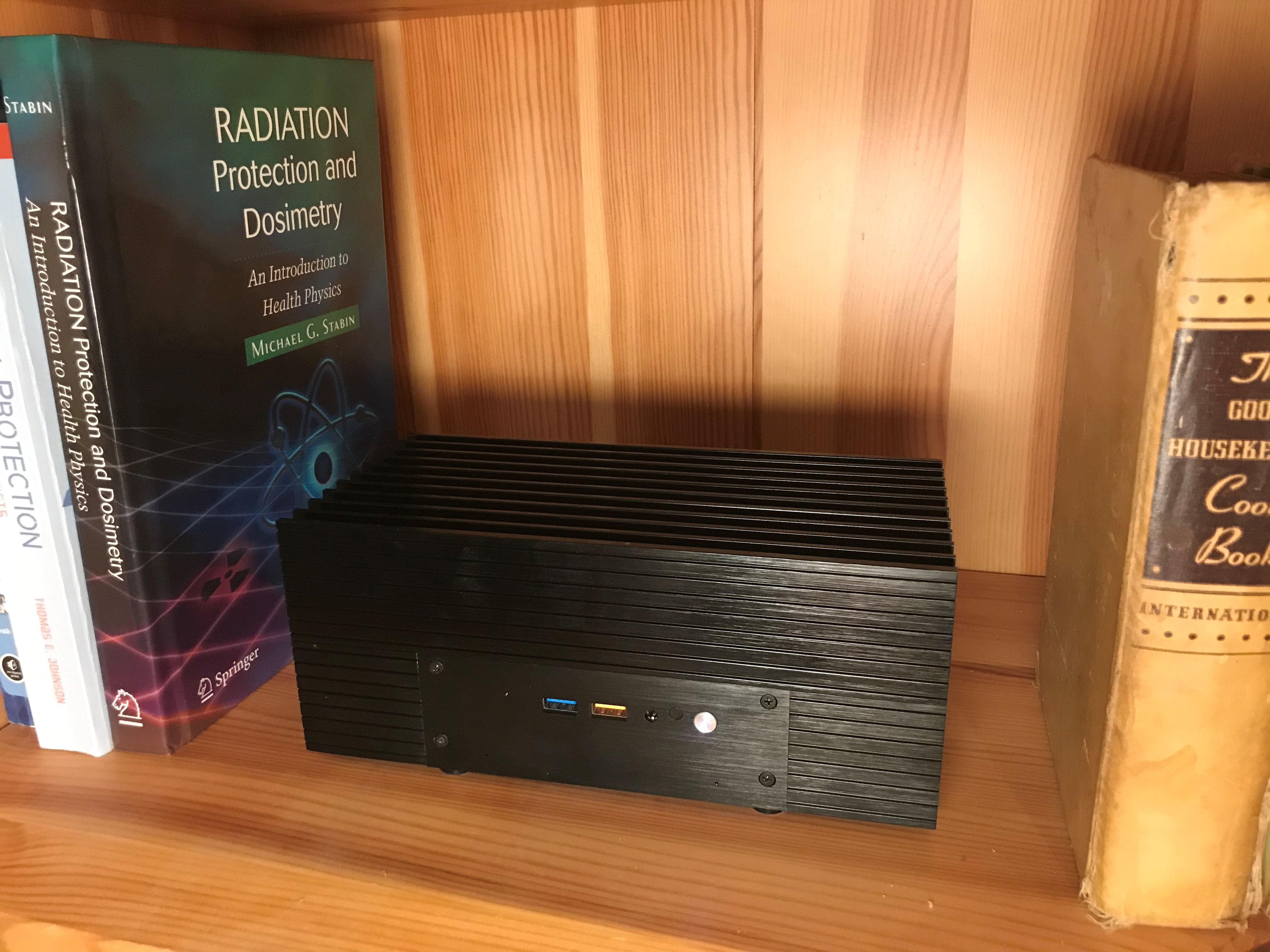
The NUC8i5BEK is one of Intel's own NUCs with an 8th-generation processor. Released in 2018, this model comes with a quad-core i5-8259U CPU (2.30 GHz), two DDR4 slots, an M.2 slot for SSDs, and USB 3.1 ports. It normally draws about 20 watts, but Discord user Ken has been able to optimize it down to 9 watts during normal validation. It is more than capable of handling any Execution and any Consensus client, making it an excellent choice for a lightweight, efficient node machine.
Ken's Setup:
- Base: Intel NUC8i5BEK ($349)
- RAM: Dell Memory Upgrade - 1x16GB DDR4 SODIMM 3200MHz ($112)
- SSD: ADATA XPG S7 Series 2TB M.2 2280 NVMe SSD ($230)
- Fanless Case (optional): AKASA Turing Fanless case ($134)
- Total: $691 to $825
Here are Ken's comments on why he chose this setup:
- Small size and footprint, the power supply is a brick on the power cord (like a laptop), single-board computer, x86 architecture, low purchase price point, low power consumption (~10W), 3-year warranty, and an active manufacture product line (Intel).
- 8th generations are plenty fast and at a lower price point than the latest generation chips.
- I upgraded to a fan-less (passively cooled) case, so the NUC is absolutely silent (0 dB) as I’m leaving it my home office (a stock NUC is near silent already).
- Plus no mechanical wear on the fan bearings.
- Resale or re-purpose value if I decide to retire this hardware platform as my RP node - NUC’s make a great workstation computer.
GreyWizard's NUC10i7FNH
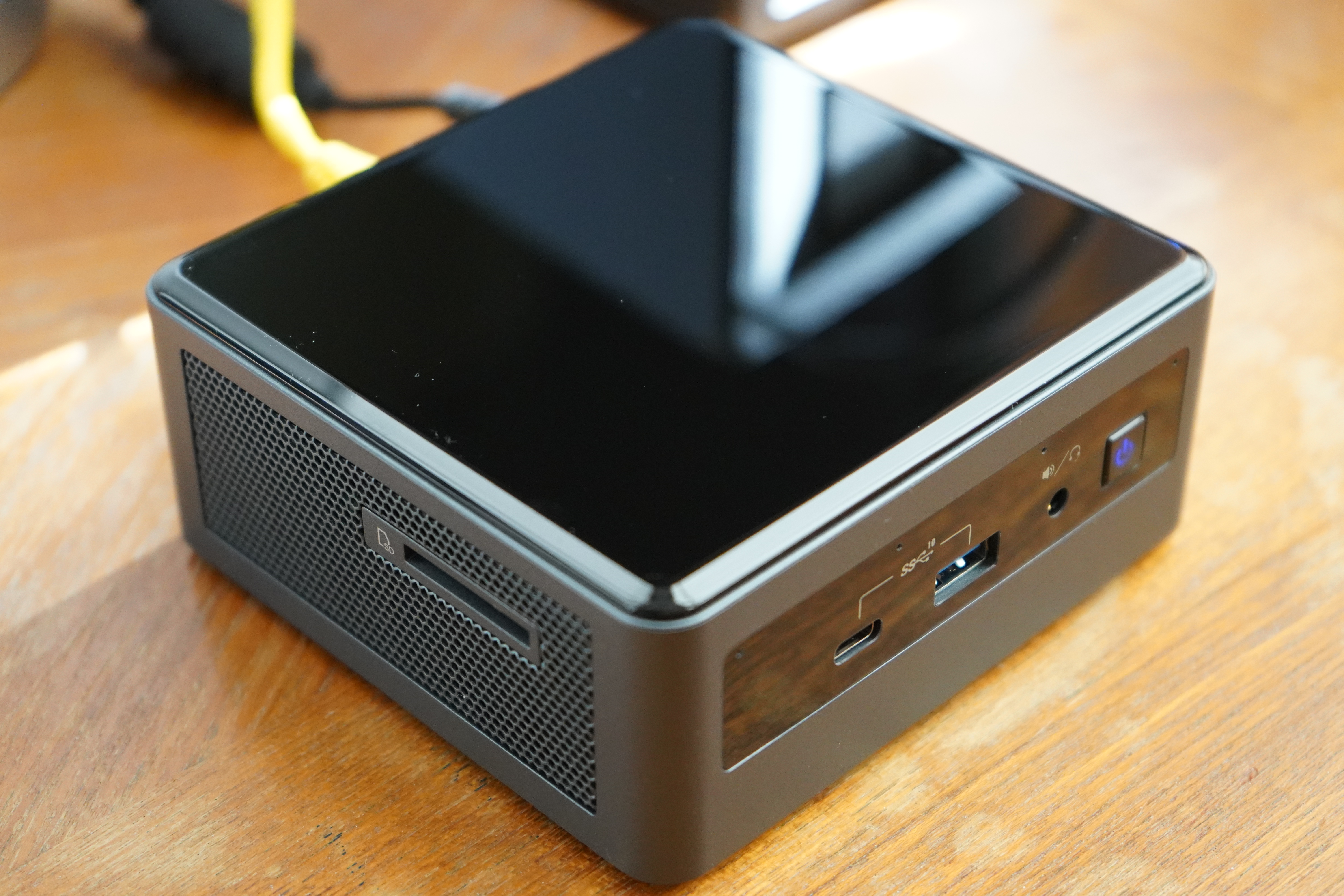
The NUC10i7FNH is another one of Intel's own NUCs. This one sports a 10th-generation processor, and was released in 2019. It comes with a six core i7-10710U CPU (1.10 GHz, boosts to 4.7 GHz), two DDR4 slots, an M.2 slot and a 2.5" slot for SSDs, and USB 3.1 ports. It draws about 20 watts of power. It is an incredibly powerful machine, given its power consumption and size. Discord user GreyWizard uses this NUC for his node - the extra power gives him peace of mind knowing that no matter what the future of the Ethereum 2.0 chain holds, his machine will be able to handle it.
GreyWizard's Setup:
- Base: Intel BXNUC10I7FNH1 ($445)
- RAM: 2x Samsung M471A4G43MB1 32GB DDR4 SODIMM 2666 MHz ($154 ea.)
- SSD: Samsung 970 EVO Plus 2TB M.2 2280 NVMe SSD ($315)
- Total: $1068
Here are GreyWizard's comments on why he chose this setup:
I went with the i7 NUC mostly because it felt like the best combination of outstanding performance relative to overall size and overhead. I also looked at other options like building a Micro ATX-sized machine. After pricing one with the specs I was looking for, this Intel NUC ended up being about the same price, and the form factor is really tough to beat. I like having the extra headroom for performance/peace of mind, and I acknowledge that this is almost certainly way overkill. I consider staking as a serious investment and I don't want to worry if my hardware will be sufficient.
Tips for other people considering this as an option...
- The NUC does run pretty warm, similar temps to a laptop. If you worry about CPU temp and you want something powerful, then you should look at small desktop setups like Micro ATX.
- You will want to make sure there is plenty of room around your NUC for airflow. Plan to clean the area regularly to prevent dust buildup.
- Make sure to check compatibility for your RAM cards. The different NUCs support varying degrees of total RAM, RAM speeds, etc.
- If you go with the NUC, I'd suggest you give yourself room to grow when selecting RAM... For example, spend a bit extra and get a single 32gb RAM card rather than 2x16 so you can expand later if you want (assuming your NUC will support 64gb in this example)
- Feel free to reach out to me on Discord if you would like to discuss.
ArtDemocrat's NUC10i5FNHN Build Process Video
To complement Greywizard's setup descriptions and tips, ArtDemocrat created this build process video as an additional help resource to set up a NUC10 (in this case a NUC10i5FNHN, but the build process should be similar for a NUC10i7FNH):